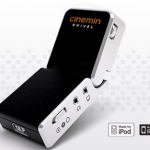Kinetic vs. Move: Who is the winner?
This holiday season, the hot item in the video gaming world won’t be a new console, or even a hot title, but a piece of hardware that will change the way you play games on the PlayStation 3 and the Xbox 360. Will people buy into it? We shall see.
Both due out this holiday season, PlayStation Move and Microsoft Kinetic will offer gamers gesture-based control for their respective systems. Some may think the Nintendo Wii features in this conversation, but the Sony and Microsoft offerings are add-ons while the Wii nunchucks are standard to the system and so in a different class.
So there has been much hype and advertising but the question we are trying to answer today is which offering is better?
Hardware
Under the bonnet, both controllers offer some amazing technical features. The Move utilizes a three-axis linear accelerometer and a three-axis rate sensor to track motion with an internal magnetometer, as well as vibration-based haptic technology. The Kinect uses a horizontal bar with an RGB camera, depth sensors, multi-array microphones and an infrared projector that combines with a CMOS sensor to see 3D under any lighting conditions.
So confused right now? Yeah, few people wont be. Basically, the Move is fancy. The Kinect is fancier. The Move has improved current technology, while the Kinect invented new technology. Now that it is a big. Also, the Move requires batteries to play, while the Kinect doesn’t. In terms of physical hardware, the Kinect’s sensor bar is larger than the Move’s Eye Cam. Not really an issue, but worth mentioning. The slight edge goes to the Kinect.
Interface Design
Winner: Move
In terms of “cool”, its a massive plus that you can turn on the Kinetic and wave your hands to scroll menus. The hands-free design now gives developers a new playing field to explore. However in the world of gaming, buttons are your friend. They allow you to engage with environments in ways you cant when you are hands-free. Buttons are good!
For good reason the Atari came out with buttons, then there were two now there are up to eight, thats not even counting D-pads and pushable thumb sticks. If developers could add more, they would. The hands-free nature of the Kinect might be cool, but if your interactions are severely limited by the design, that is a bit of a problem. Sure, you could argue that the Kinect could offer new styles of games that no one has even thought of, but good luck trying to tell developers they don’t need to program any button commands into their games. When they stop laughing, you can tell them that you are serious. Buttons = AWESOME
Originality
Winner: Kinect
Easiest call to make. The Move is taking Nintendo’s idea and making it slicker, sexier and cooler. In terms of technology, the Move clowns the Wii’s nunchucks, but regardless of how many bells and whistles Sony added, the Move will always be compared to the Wii’s controllers – even if that isn’t entirely fair (it really is though). The Kinect is a different beast altogether.
Kinetic is part of the same market and will target Move and Wii buyers, but it’s original, and its uses could go beyond just the gaming world. The Move is an incredibly advanced evolution of the gaming controller. The Kinect is new technology. It will appeal to families with younger kids and casual gamers who are interested in the novelty of it – just like the Wii. The Kinect wins this category hands down.
Games
Winner: Move
Move dominates the Kinect here. With backwards compatibility on several existing games promised via patches, plus the ability to play any upcoming game, the Move is the clear winner. No contest really.
As for launch titles, the Kinect is confused about what it wants to be, and what it can do. There are a few fun, and interesting games coming out for the Kinect, but they all just seem to be variations of moving left or right, dancing, jumping, and the occasional punching junk that flies at the screen. There are a few exceptions, like the bizarre and interesting-looking Children of Eden, but with the ability to play any game with or without the Move, the possibilities are endless. I would rather use the Move to mimic a rifle in a action game, or using the controllers to play a virtual game of archery, or hooking up the Kinect so you can jump over a digital stick, which sounds more awesome to you? Sweet, you can turn left. The action game is going to be better.
Kinetics main issue is that when developers are designing games they have to concentrate on the platform in isolation. So not the case with Move. They can develop a game for both PlayStaion platforms and then tweak the title for Move compatabilty later on. What does that mena for Move? More games, bigger budgets. Developers can recoup their costs by selling their games to more than just a niche market, which will discourage many from giving the Kinect a go. Maybe that will mean that the Kinect’s games will be more original than the Move’s, but that is still a maybe for now. The Move is the easy winner in this category.
Potential
Winner: Kinect
Here we come with the obscure category, but in my opinion by far the most interesting. You buy the Move, you know what your getting.
Yes, there will be developers that create games no one has ever comprehended, but its going to be subtly different to what we have already seen. The Wii might not have the hardware to keep up, but developers for it have displayed the creativity that Move developers will be forced to follow.
The Kinect is a whole other kettle of fish.
Whether or not the technology catches on in games remains to be seen, but don’t expect this hardware to disappear. The genie is out of the bottle, so to speak, and it would be shocking if this technology doesn’t someday make its way into other types of hardware. Imagine sorting through the music on your computer with the wave of a hand, or typing on a virtual keyboard. Kinect is the first stage of what may very easily become the future of computing, and with Microsoft holding the patents, it would be insane for it not to already be planning to introduce the technology to other electronics. Count on it. While this might not help sell units now, the Kinect is the clear winner here.
Cost
Winner: Draw
At first glance, this might be an easy win for the Move. After all, the bundle costs $99, while the Kinect costs $149. Seems simple enough, right? Not so fast.
The Kinect has two major factors working for it in terms of price. First, the games will on average be $10 less than regular (and Move) games. That might not be a huge deal, especially since the Move will work with the games you would probably buy at the regular price anyway, but for casual gamers looking at both systems head to head, Kinect titles will look cheaper. The second, and more important factor, is the system bundles. If you own both systems and are shopping based on price, the Move is your baby. But for casual gamers looking to get started from scratch with either one, the Kinect is cheaper.
In terms of system pricing, the Microsoft will offer a bundle with its newly redesigned Xbox 360 and a 4GB hard drive, plus the Kinect for $299. The hard drive size might put some people off, but that can be upgraded at anytime, and 4GB is plenty to save games. Sony will also offer a bundle that includes the PS3 and the Move for $399.
Now, you may wonder what hard drive that will include. Keep wondering. Even though the Move ships in September, and this bundle will ship with it, Sony still has yet to announce what hard drive will be included. It seems likely that the 120GB hard drive will be the one, as it is in line with current pricing ($299 + $99 for the Move), but there might be a movement to replace those with 320GB. Sounds great, but whatever the size, it will still cost the beginning gamer $100 to get started. You could also argue that the built-in Blu-ray player makes the extra money worth it, but again, you would have to argue that to someone who simply sees a $100 price difference. So that makes this category a draw.
Number of Players
This was a tough one to call, because you’re trading off one thing for another. In theory, the Move should dominate this category for the simple fact that you can have up to four players at one time, while the Kinect is limited to two. In the real world, the Kinect will allow two players out of the box without additional purchases, while you would need to buy three more sets of Move controllers – not a cheap prospect – to max out the number of gamers. But in the end, the Move accommodates more players. You can always wait and buy Move controllers on sale if you need, or have other people bring their own. So the edge goes to the Move.
Overall Winner: Move
The Kinect is all about potential, but potential won’t sell units. Just ask Sony, who has learned its lesson over and over again. The Sony Mini disc had potential, potential that you can now examine to your heart’s content at a garage sale for around $2. The Kinect could be awesome. Someday. Maybe. But it will need the support of clever and inventive developers willing to dedicate the time, money and resources to developing exclusively to a niche market. It is a bit of a catch-22. In order for the Kinect to sell units, it needs original games, but in order for developers to create original games, they will need to know that enough people have bought the Kinect to justify the expenditure.
In the end, the games are what it is all about. No matter how fancy the technology is, no matter how great the pricing is, if it isn’t fun, no one will care. Right now the Move has the clear advantage in terms of games, both with upcoming titles and compatibility with non-Move specific games, while the Kinect is limited to the launch titles. In time that could change, and the Kinect will blow us away and redefine gaming. Or not. But for now, the Move is the clear winner.
| Print article | This entry was posted by SirDyl on July 27, 2010 at 2:04 pm, and is filed under Gaming. Follow any responses to this post through RSS 2.0. You can leave a response or trackback from your own site. |
Facebook comments:











